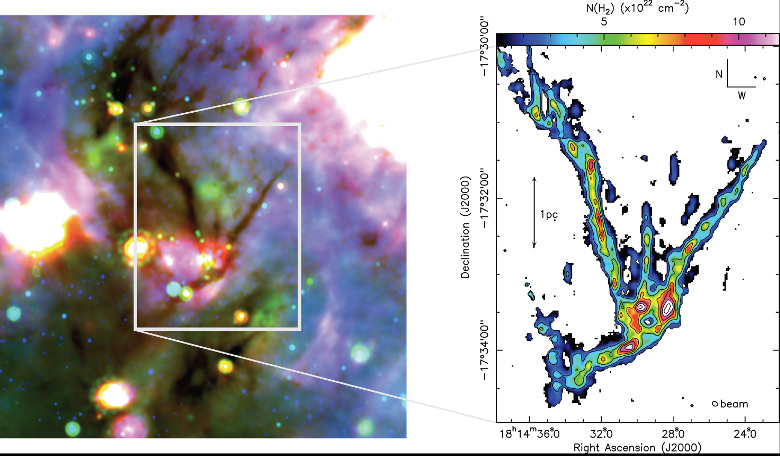Astronomers studying a cloud network of four filaments converging on a central hub, have captured the effects of gravity on ammonia gas moving within the cloud to show how the swirling motion of gas aids in the star formation process.
It has been known for some time that stars are born in condensed cocoons of gas that formed when dense filamentary cloud structures fragmented into smaller clumps. Under the influence of gravity these smaller clumps become compacted and the compressed gas at the centre will eventually amass enough material to form a protostar.
Examples of these huge dusty filaments are ubiquitous in the Milky Way, but so far astronomers have not seen the process in action. That is until now.
Using the Jansky Very Large Array (JVLA) and the Green Bank Telescope, a team of astronomers from Cardiff University and the University of Manchester, both in the UK, have observed SDC13 – a four filamentary cloud structure that emanates from a central core – to see how material is being pulled down from the filaments and accreted into cores.
These cores seemingly span the full length of each filament and the team note that “intense surges in the gas motion are observed at two-thirds of the cores that have yet to form stars.” As SDC13 has a total mass of gas equivalent to a thousand of our Suns, that is a lot of potential stars that could be formed.
Gwen Williams of Cardiff University who was part of the team explains; “we believe that the same processes are at work at the filament junction, where both the largest internal motions of the gas and the most massive cores are found. We also speculate that strong acceleration gradients are generated at the hub centre resulting in large accumulation of matter and the formation of massive cores. Hence, our results reveal that this type of interstellar filament and hub system represents a privileged location for the formation of the most massive of stars in the Galaxy.”











